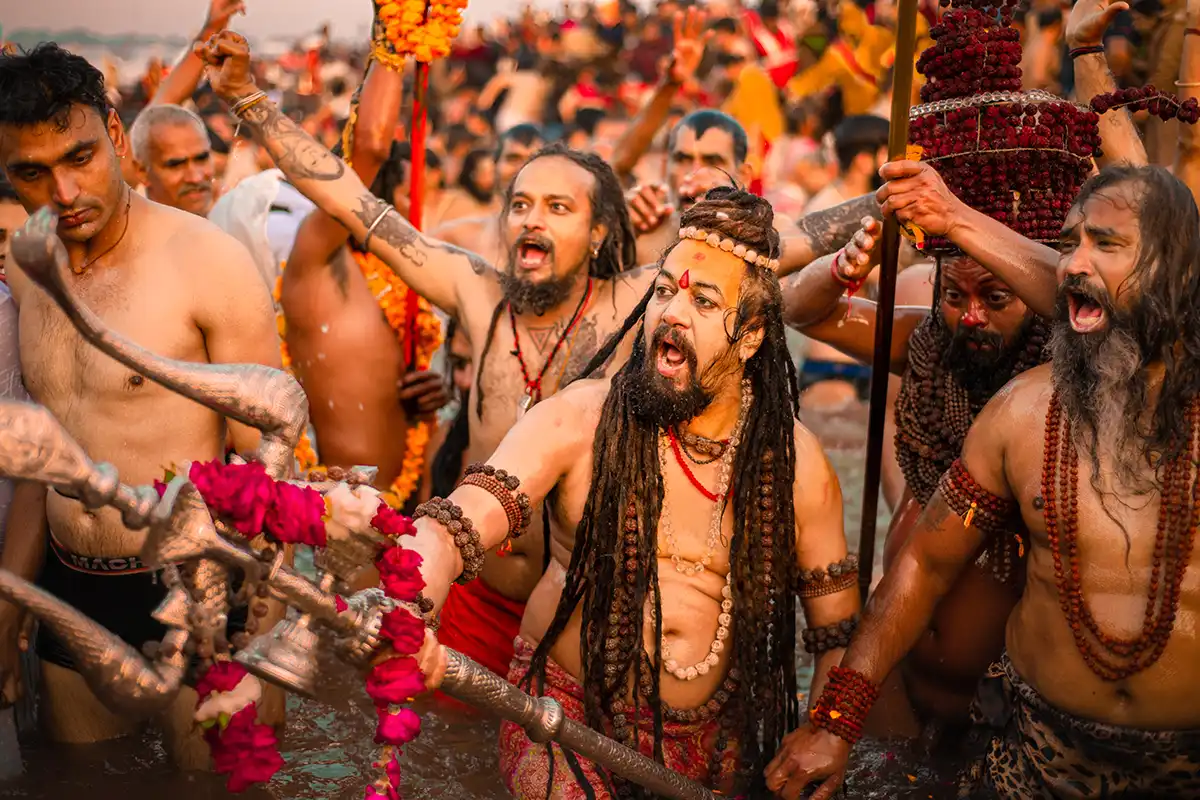The Kumbh Mela 2025 is set to take place in Prayagraj, one of the most sacred cities in India, from January 13, 2025, to February 26, 2025. The event, which is one of the largest religious congregations in the world, is expected to draw nearly 40 crore devotees from across the globe, making it a monumental occasion in the Hindu calendar. The Kumbh Mela, an integral part of Indian spiritual life, holds profound significance for Hindus as it is believed that taking a dip in the sacred rivers of Prayagraj—where the Ganges, Yamuna, and the mythical Saraswati rivers meet—will cleanse one of sins and grant salvation.
Spiritual Significance of the Kumbh Mela
The Kumbh Mela is more than just a religious festival; it is an embodiment of the deep spiritual and cultural heritage of India. It is believed that this gathering is the moment when divine energy from the cosmos converges at specific locations, offering spiritual benefits to those who take part. According to Hindu tradition, the Kumbh Mela is celebrated every 12 years in four locations—Haridwar, Ujjain, Nasik, and Prayagraj (formerly known as Allahabad). The 2025 event will be especially rare, as it marks a Maha Kumbh, a more auspicious gathering that happens once every 144 years.
The significance of this alignment is profound: devotees believe that the cosmic alignment during the Maha Kumbh holds the potential for exceptional spiritual awakening. Pilgrims from all walks of life flock to Prayagraj for this sacred event, seeking to purify themselves, remove negative energies, and attain moksha—the ultimate liberation from the cycle of birth and death.
The Venue: Prayagraj, The Sacred City
Prayagraj, a city with deep historical and mythological importance, becomes the focal point of the Kumbh Mela. The city is strategically located at the Sangam, the confluence of the Ganges, Yamuna, and the mythical Saraswati river. This sacred confluence is considered one of the most powerful places for Hindus to bathe, pray, and seek divine blessings.
The city, historically known as Allahabad, has witnessed Kumbh Melas for centuries, attracting millions of pilgrims over the ages. In 2019, the Kumbh Mela at Prayagraj set a record by drawing over 24 crore devotees, and with the 2025 Mela predicted to be even larger, the city is preparing to welcome a crowd of over 40 crore people. The sight of thousands of tents, makeshift temples, and vast gathering areas will be seen all over the city during the 45-day festival.
Preparation and Infrastructure for the Maha Kumbh
Organizing such a massive event in a city with a population of approximately 12 lakh requires meticulous planning and an extraordinary level of infrastructure development. The Uttar Pradesh government, along with the Indian Railways and the Indian Army, has begun preparations for the Kumbh Mela 2025. The infrastructure will include temporary tents, medical facilities, water supply systems, public toilets, and transportation for the influx of pilgrims.
The state government has also focused on enhancing traffic management and security to ensure the smooth flow of devotees. With such a large crowd, safety and efficient crowd control are paramount. Police personnel from across the country will be deployed, and surveillance through drones and CCTV cameras will be a key part of the plan. Furthermore, religious leaders and saints from various parts of India and abroad will be in attendance, offering guidance, prayers, and blessings to the pilgrims.
In addition to physical infrastructure, there will be spiritual amenities set up for the devotees. These include places for religious ceremonies, prayer meetings, and teachings from revered gurus and saints. Special emphasis will be placed on the Hindu rituals, including the Shahi Snan (royal bath) and the Ardh Kumbh (half Kumbh), which are considered highly auspicious events during the festival.
Rituals and Activities at the Kumbh Mela
The Kumbh Mela is not just about the holy dip in the sacred rivers; it also involves numerous religious activities, pilgrimages, and cultural events. Devotees believe that the main purpose of the event is to rid oneself of sin and gain spiritual purity.
At the Kumbh, pilgrims participate in a variety of rituals, including the sacred Ganga Aarti, where prayers are offered to the river, seeking blessings for themselves and their families. Sadhus, or ascetics, play a key role in these ceremonies and are revered for their deep spiritual practices. They are often seen leading processions, offering spiritual guidance, and participating in the royal bath.
The Shahi Snan, the most important bathing ritual, will take place on specific auspicious days, during which millions of people will bathe at the Sangam at the same time. The royal procession, led by Naga Sadhus (naked ascetics), marks the grandeur of the occasion and holds historical significance.
Apart from the religious activities, the Kumbh Mela is also a vibrant cultural affair. The city hosts various art exhibitions, folk performances, and spiritual discourses that attract people from all corners of India and the world. It is a confluence not only of rivers but also of cultures, traditions, and ideas.
The Economic and Social Impact
The Kumbh Mela is not just a religious event; it is also an economic boon for Prayagraj and surrounding areas. The influx of millions of devotees contributes significantly to the local economy, providing employment to thousands of people. Hotels, local businesses, and vendors offering food, souvenirs, and religious items see a massive boost in their sales. Temporary markets also spring up, selling everything from spiritual books to clothing and handicrafts.
Additionally, the tourism industry experiences a significant rise, with visitors coming to Prayagraj to witness the spiritual grandeur of the event, even if they are not religiously inclined. The Kumbh Mela’s global appeal increases international tourism, contributing to India’s cultural diplomacy on the world stage.
Challenges and Solutions
Despite the scale of the event, there are challenges. Ensuring environmental sustainability in such a large gathering is a crucial task. Managing waste disposal, water conservation, and pollution control are major areas of concern. The government is planning eco-friendly initiatives, including the construction of solar-powered lighting systems and rainwater harvesting plants.
Moreover, maintaining public health and hygiene is another priority. The healthcare infrastructure will be strengthened with medical camps, ambulance services, and disaster management teams in place. The ongoing COVID-19 pandemic has also added an extra layer of complexity, requiring the organizers to ensure that appropriate health protocols are followed.
Conclusion
The Kumbh Mela 2025 in Prayagraj promises to be a historic event, not just for the millions of devotees seeking spiritual upliftment, but also for the city and its surrounding regions. As one of the largest peaceful gatherings in the world, the Kumbh Mela reflects India’s rich spiritual and cultural heritage. Whether it’s the sacred dips in the Sangam, the spiritual teachings of revered saints, or the cultural vibrancy of the event, the Kumbh Mela 2025 is bound to be a grand spectacle for both participants and spectators alike.
The Maha Kumbh’s rare occurrence every 144 years brings with it an unparalleled spiritual experience, making Prayagraj the focal point of global attention. As the event draws closer, devotees, tourists, and spiritual seekers alike are eagerly awaiting the opportunity to partake in this life-changing experience.







